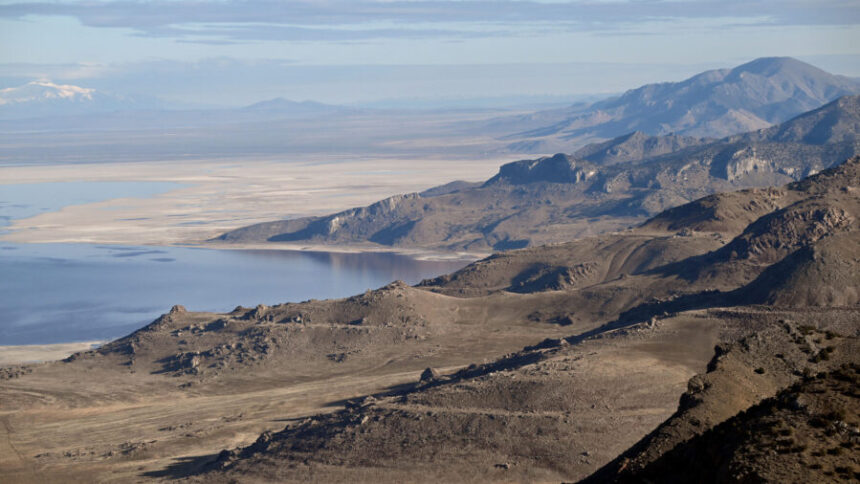- Promontory Point during an EcoFlight around the Great Salt Lake on Tuesday, April 9, 2024.
- Great Salt Lake Collaborative

Scott G. Winterton, Deseret News
Promontory Point during an EcoFlight around the Great Salt Lake on Tuesday, April 9, 2024.
Editor’s note: This article is published through the Great Salt Lake Collaborative, a solutions journalism initiative that partners news, education and media organizations to help inform people about the plight of the Great Salt Lake — and what can be done to make a difference before it is too late. Read all of our stories at greatsaltlakenews.org.
SALT LAKE CITY — In a couple of months, the Great Salt Lake has a chance of reaching its healthy range for the first time in over a decade.
The Natural Resources Conservation Service recently forecasted the Great Salt Lake to rise by as much as 1.5 feet from spring runoff.
Currently, the lake is at 4,194.5 feet above sea level. That’s 1.5 feet from the tail-end of its healthy range of 4,196 to 4,200 feet.
However, it’s important to note the NRCS thinks it’s most likely the lake will rise by just under a foot. On the low end, it thinks there’s a chance the lake could only rise by less than 6 inches.

Great Salt Lake Collaborative
It’s hard to tell exactly what will happen with other factors like upstream diversions, reservoir levels and the railroad causeway that divides the lake in two.
But, there’s a chance the Great Salt Lake will be “healthy” for the first time since 2013 and remarkably, not even two years since hitting a record low of 4,188.5 feet in late 2022.
“It’s just fantastic news,” Joel Ferry, executive director of the Utah Department of Natural Resources told KSL NewsRadio.
“It’s really neat to see where we are today.”
Great Salt Lake water level still needs attention
However, Ferry noted that there’s still work to do to get water to the lake.
For one, the Great Salt Lake typically loses about 2 feet every summer to evaporation.
Ferry also said he’d like to see the lake closer to 4,200 feet, partly because it would cover up more of the exposed lakebed.
The lakebed is laced with toxins like arsenic, mercury and selenium. It’s a key contributor to dust flying around the Wasatch Front during wind storms.
Thankfully, Utah has had two great snowpacks in a row, but as Utahns have seen over the past decade, not every year is so forgiving.
“Today the drought is over, but we are going to be going into a drought in the near future…guaranteed,” Ferry said. “It’s just the cycle that we’re in.”
Ferry called on Utahns to keep conserving water in any way possible. He said that’s part of the reason why the Great Salt Lake is where it is today.
“The actions we take today are going to pay huge, huge dividends in the future,” Ferry said.
Newsletter












